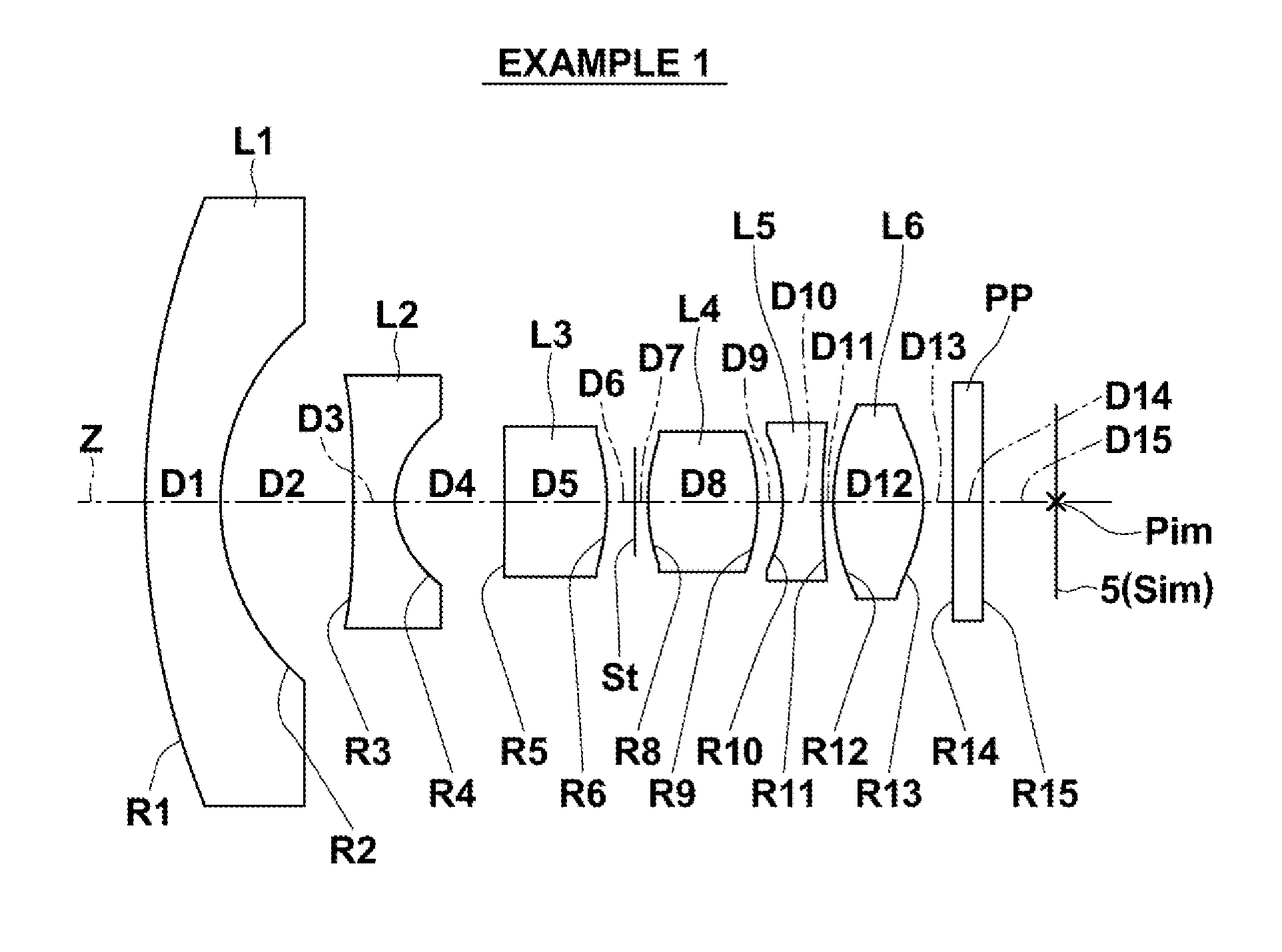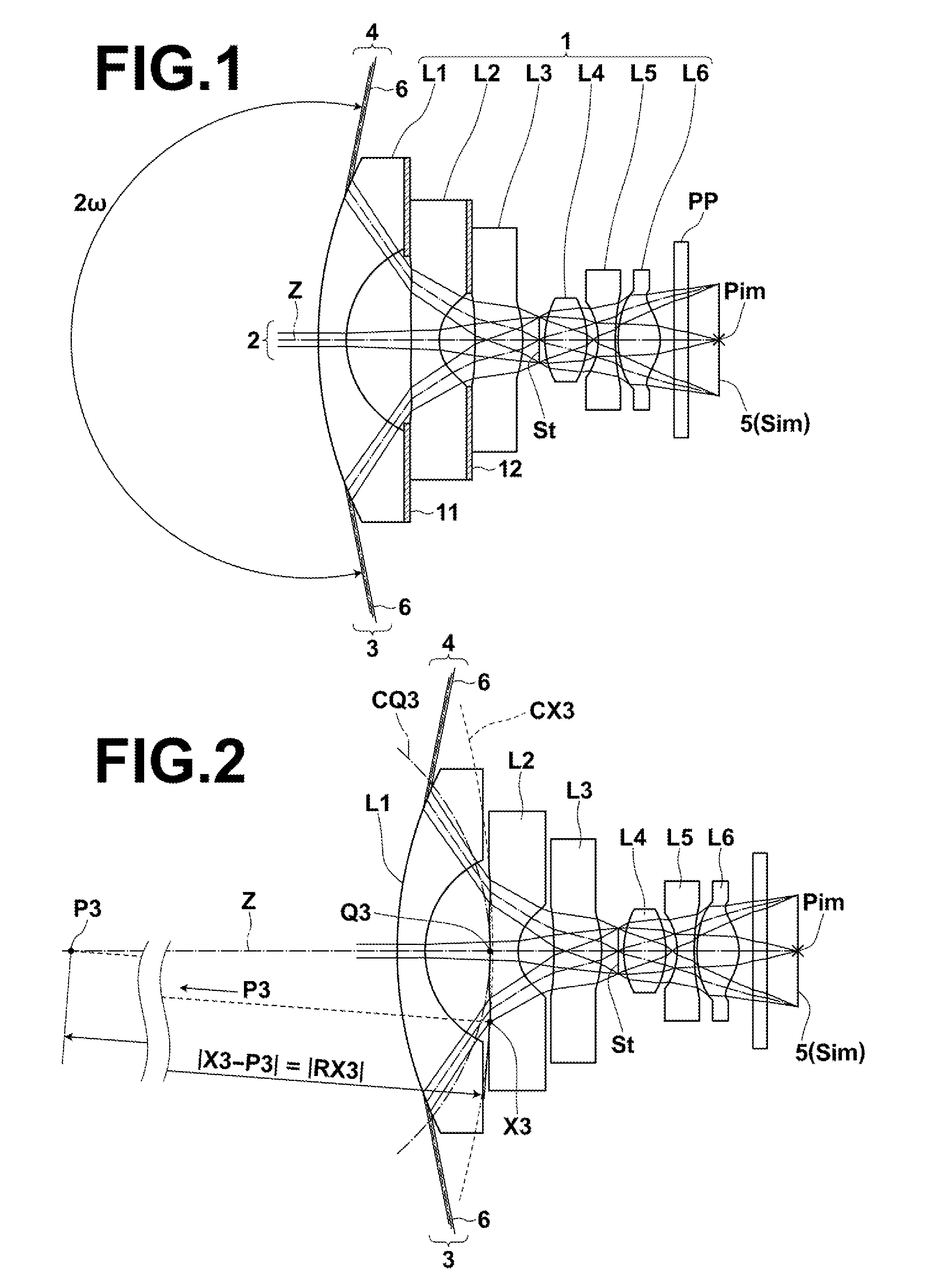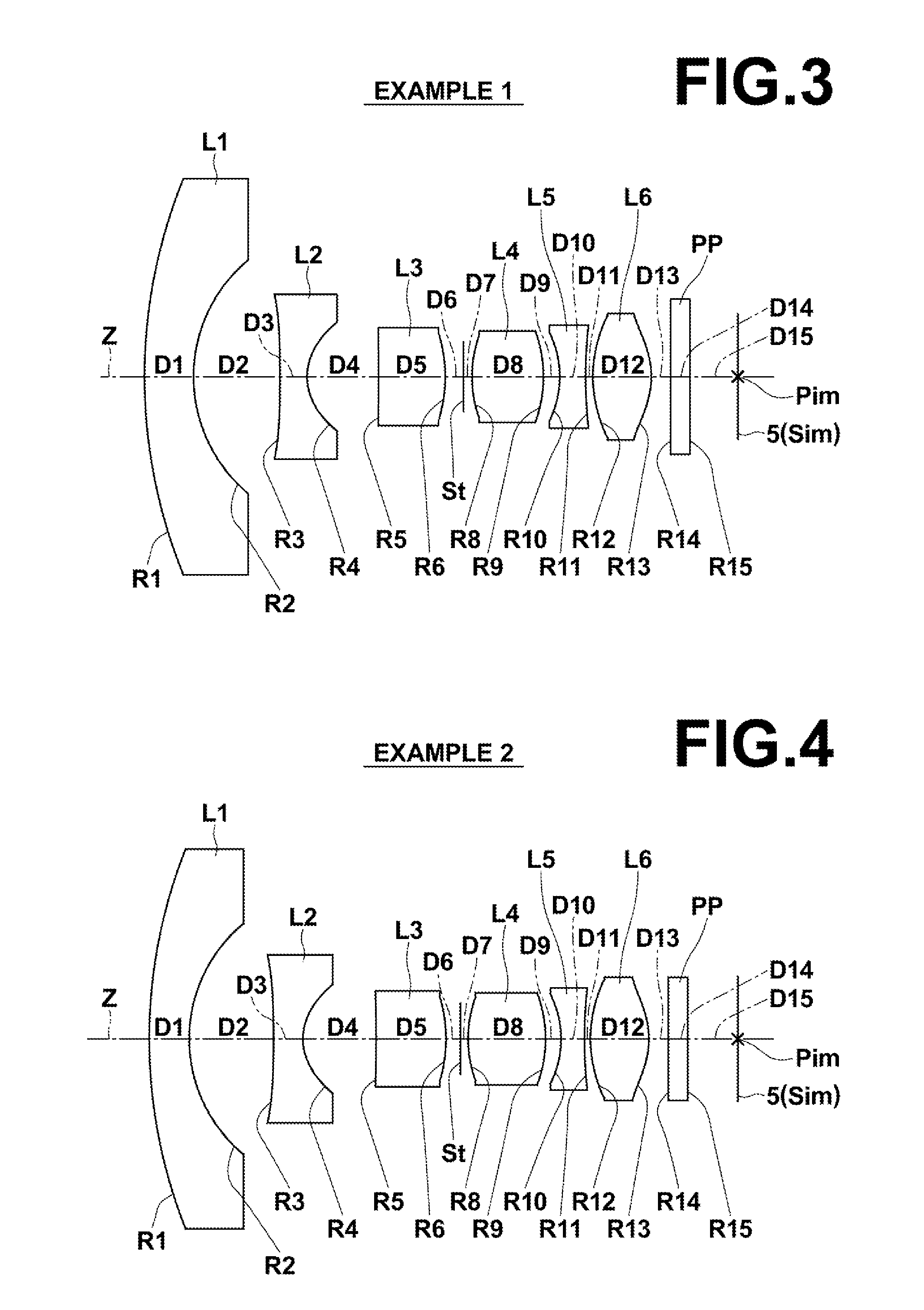Imaging lens and imaging apparatus
a technology of imaging lens and imaging apparatus, which is applied in the direction of optics, instruments, optics, etc., can solve the problems of increasing cost, increasing cost, and unable to produce the lens system at low cost, and achieves the effects of low cost, wide angle of view, and small siz
- Summary
- Abstract
- Description
- Claims
- Application Information
AI Technical Summary
Benefits of technology
Problems solved by technology
Method used
Image
Examples
first embodiment
[0082]Further, in the imaging lens the object-side surface of second lens L2 is concave and the object-side surface of third lens L3 is concave. When the object-side surface of second lens L2 is concave, it is possible to easily widen the angle of view. When the object-side surface of third lens L3 is concave, it is possible to easily widen the angle of view, and to easily separate axial rays and peripheral rays from each other at first lens L1 and second lens L2.
[0083]Next, the structure of a second embodiment of the present invention will be described. An imaging lens according to the second embodiment of the present invention includes negative first lens L1, negative second lens L2, positive third lens L3, positive fourth lens L4, negative fifth lens L5 and positive sixth lens L6 in this order from the object side.
[0084]This imaging lens consists of at least six lenses, which are a small number of lenses. Therefore, it is possible to reduce the cost and the total length of the i...
second embodiment
[0086]Further, in the imaging lens the object-side surface of third lens L3 has a shape having negative refractive power at a center and stronger negative refractive power at an effective diameter edge, compared with the center. When the object-side surface of third lens L3 has the shape having negative refractive power at the center and stronger negative refractive power at the effective diameter edge, compared with the center, it is possible to easily widen the angle of view, and to easily separate axial rays and off-axial rays from each other at first lens L1 and second lens L2. Therefore, it is possible to easily correct curvature of field and distortion. The shape of the object-side surface of third lens L3 will be described later in detail.
[0087]Next, the structure of a third embodiment of the present invention will be described. An imaging lens according to the third embodiment of the present invention includes negative first lens L1, negative second lens L2, positive third ...
third embodiment
[0090]Further, in the imaging lens the image-side surface of second lens L2 has a shape having negative refractive power at a center and weaker negative refractive power at an effective diameter edge, compared with the center. Further, the image-side surface of third lens L3 has a shape having positive refractive power at a center and weaker positive refractive power at an effective diameter edge, compared with the center. When the image-side surface of second lens L2 has a shape having negative refractive power at a center and weaker negative refractive power at an effective diameter edge, compared with the center, it is possible to easily correct distortion. When the image-side surface of third lens L3 has a shape having positive refractive power at a center and weaker positive refractive power at an effective diameter edge, compared with the center, it is possible to improve image qualities in a peripheral portion of an image by excellently correcting a coma aberration caused by...
PUM
 Login to View More
Login to View More Abstract
Description
Claims
Application Information
 Login to View More
Login to View More - R&D
- Intellectual Property
- Life Sciences
- Materials
- Tech Scout
- Unparalleled Data Quality
- Higher Quality Content
- 60% Fewer Hallucinations
Browse by: Latest US Patents, China's latest patents, Technical Efficacy Thesaurus, Application Domain, Technology Topic, Popular Technical Reports.
© 2025 PatSnap. All rights reserved.Legal|Privacy policy|Modern Slavery Act Transparency Statement|Sitemap|About US| Contact US: help@patsnap.com



